Ambassador was the enduring symbol of post-Independence India.
Born: 1958, Uttarpara, West Bengal. Died: 2014.
Any guess?
It’s the good old Hindustan Motors’ Ambassador or “Amby” as it became popularly known in the 1990s and 2000s. The burly, stately-looking, sturdy car was India’s answer to all its problems – bad potholed roads, big-fat Indian families and easy to fix by any low-skilled mechanic.
The Ambassador was what India wanted to be – strong and dependable. The first diesel car of India, it was known as the ‘King of Indian Roads’. According to the company’s website, the car remained in production for the longest time in India – in 1958, the Ambassador cost a mere Rs 14,000 and it was sold for a little over Rs 5 lakh in 2014.
Every other Indian would have sat in an Ambassador, the enduring symbol of post-Independence India. The car was a symbol of the quintessential Indian family as well as the powerful elite. Three generations of Indians could fit in comfortably in this “big-size family car”.
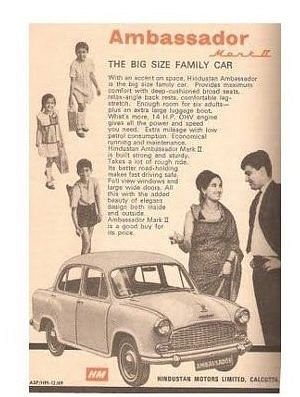
Also read: HMT watch was all about sturdy functionality, and then India changed
But add a little lal-batti on top, and the same humble, beast-of-burden car acquired a power statement. One of its print advertisements said, “We are still the driving force of the real leaders.”
It was probably the only India-made vehicle that bridged the class divide. “You could be wealthy, have aristocratic habits and own an Ambassador, and you could well be a middle-class person and own the same car. It was amazing how it could cater to people’s aspirations as well as their desire for a sturdy, fuel-efficient mode of transport,” said 45-year old Shahana Rajesh who owned an Ambassador till 1996.
Babu’s choice
So, it came as a shock to many Indians when Prime Minister Atal Bihari Vajpayee opted for a BMW instead of the Amby in 2003. It was a narrative shift in India’s power optics. Until then, the Ambassador was the natural choice for prime ministers, politicians, ministers and even civil servants.
In 2014, the government decided to clear the way for buying other brands for its officers.
“Ambassador was not just a car, it was about India, it was about jugaad, any roadside guy could service the car – it was the umbilical cord for Indians,” said a brand expert whose home-bred advertising agency Equus Advertising developed some of the marketing strategy and commercials for Ambassador.
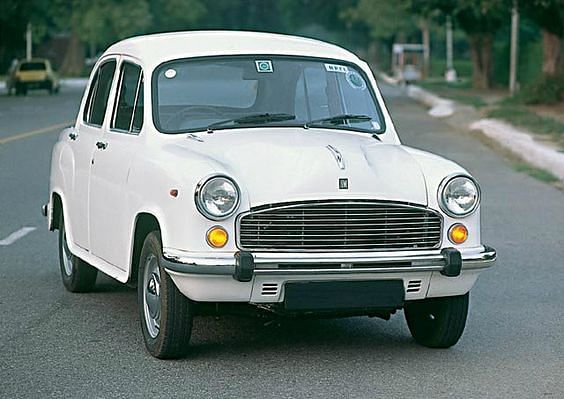
The road to Amby
The Hindustan Ambassador was based on the Morris Oxford series III model, which Morris Motors Limited manufactured from 1956 to 1959 at Cowley, Oxford, in UK.
There have been seven generations of the Ambassador. While the first was called Mark-1, the 7th-generation Ambassador, which complied with BS-IV engine standards, was named Encore. The first-generation Ambassador had a 1,489 cc diesel engine –the first car in India to have a diesel engine – while Ambassador Avigo, launched in 2004, came with an 1817 cc engine.
In the early 2000s, it was rebranded as Amby to appeal to the younger millennial Indians.
Also read: Ambassador not Cadillac: How Lal Bahadur Shastri defied Nehru’s tradition
Maruti captured market
Ambassador enjoyed market supremacy for decades till the mid-1990s. Its appeal began to wane gradually with the growing popularity of the easily-manageable, small-family Maruti Suzuki cars, which boasted of modern design and right pricing. Women’s mobility increased with the Maruti cars, which could be bought with easily available monthly instalments. It was also the time the Indian market was opening itself up to foreign cars.
Once Hindustan Motors made it official that it would stop production of Ambassador in 2014, Amul Butter paid a tribute to the grand old brand. “Ambas-sadder!” it said as the iconic Amul girl gave a good-bye hug to the car.
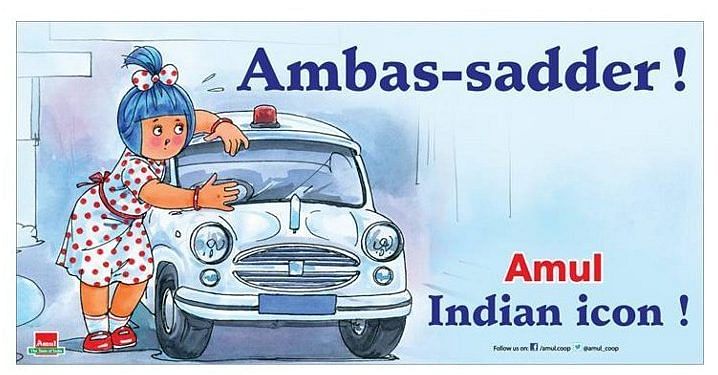
Kali-Peeli
Although Hindustan Motors, the makers of “Amby”, stopped Ambassador’s production, one can still spot them on the road – mostly as the quintessential kali-peeli or peeli taxis or the occasional bullet-proof car for the government babu.
Global automotive programme ‘Top Gear’ voted it as the world’s best taxi in 2013.
But the kaali-peeli Ambassador is now facing stiff competition from new-age taxi service companies, such as Uber and Ola. Preferences of independent taxi owners are also changing fast.
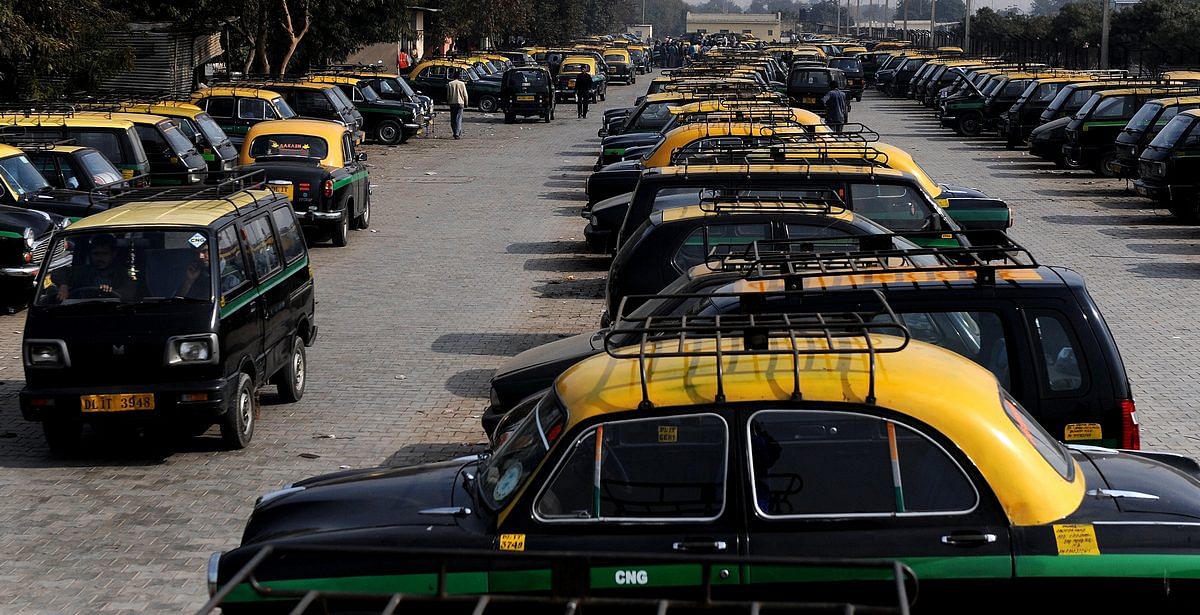
French Avatar
But all good things don’t necessarily have to come to an end. The Ambassador is expected to make a comeback in a new French avatar. Its new parent is the French automobile maker, PSA Group, which owns global brands like Peugeot, Citroen and DS Automobiles.
The PSA Group acquired the Ambassador brand from Hindustan Motors for Rs 80 crore in February 2017. In a new makeover, a sedan version of Ambassador may hit the roads soon.


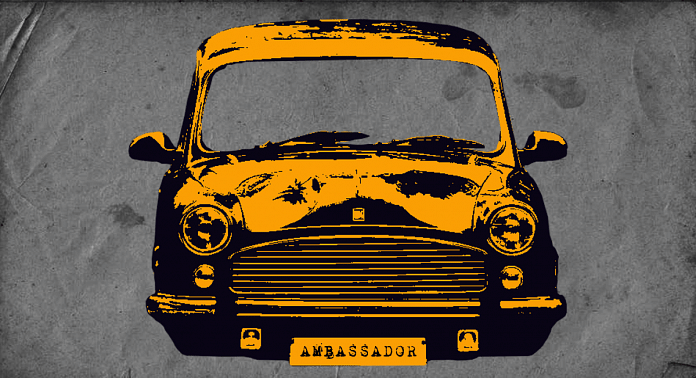

In Kerala, we still have a lot of Privately owned amby’s. They are the most durable cars in the nation. Parts have almost doubled in price due to lack of availability. It is becoming expensive to have a well maintained one. But it’s worth every penny!! But it’s saddening when I see some Privately owned amby’s in a bad condition.
I think we as a rule tend to only see what interests us. The Ambassador was a vehicle that was so symbolic and shambolic of the way India progressed and also was allowed to progress. It is a sad symbol of make-in-India because, speaking purely in automotive terms, the Tata-Mercedes-Benz trucks and buses were the best and the most positive of the symbols of make-in-India in their entirety.
Our family’s personal vehicle was the Fiat for a long time, but the Ambassador was the car the government provided father with. We toured large parts of Maharashtra in considerable comfort, although there was no air conditioning in those days. As a senior executive at Hindustan Motors told one of the owners ruefully, Babu, each part of the car makes a sound, except the horn.
The car symbolises the rise and fall of West Bengal in Indian economy.